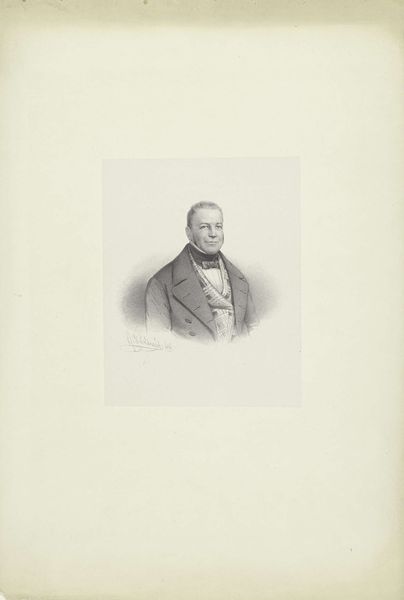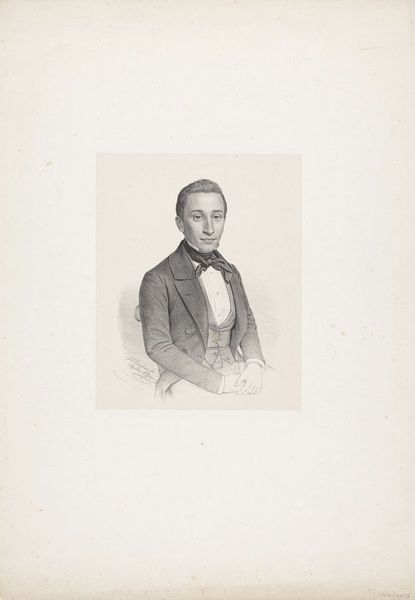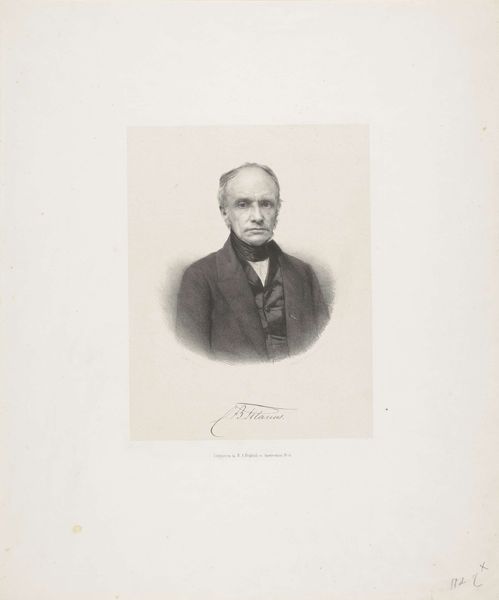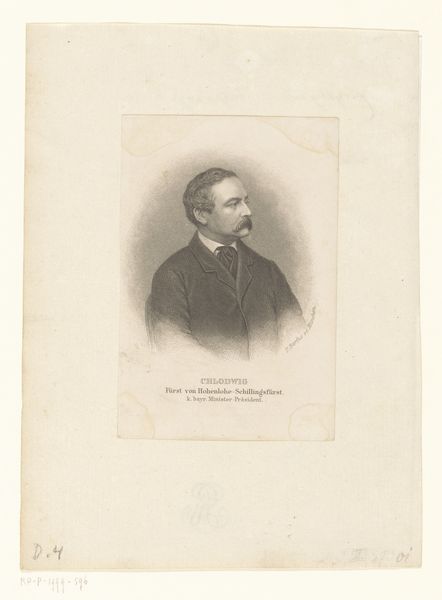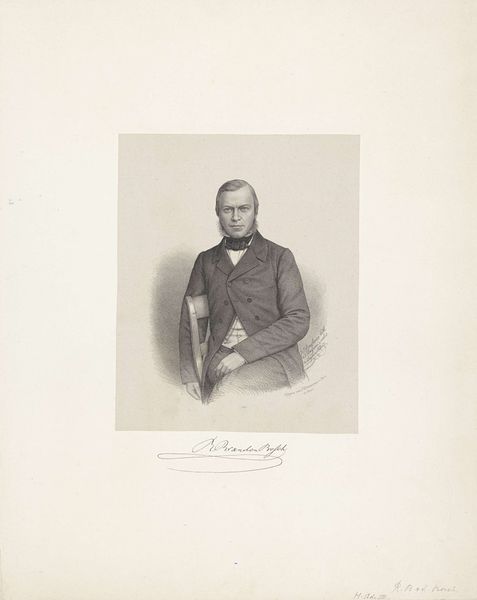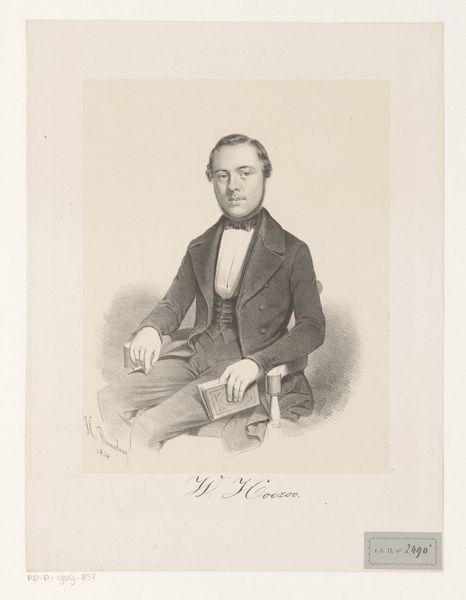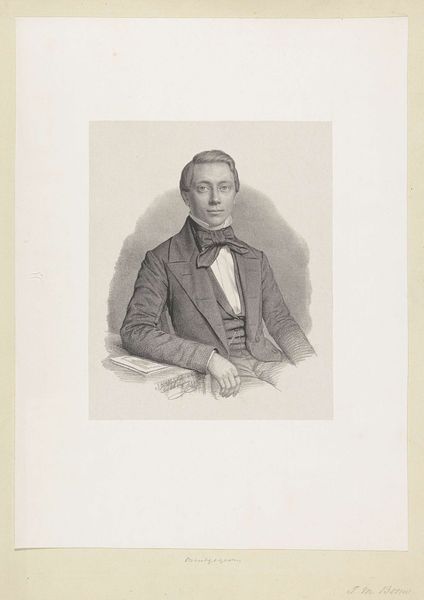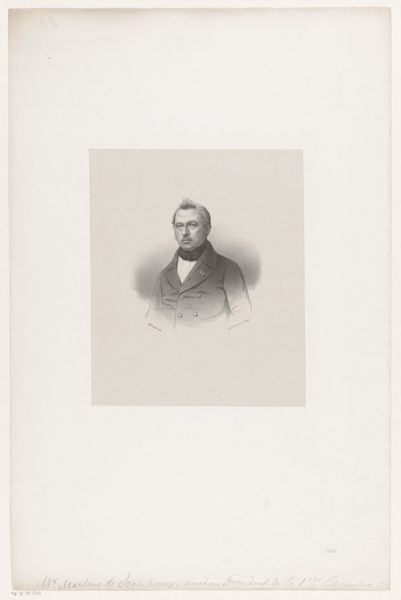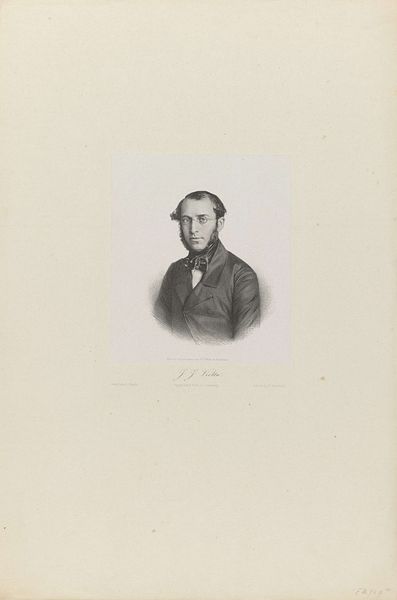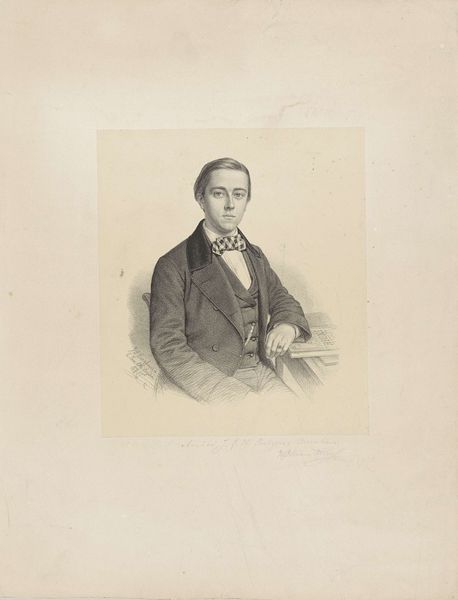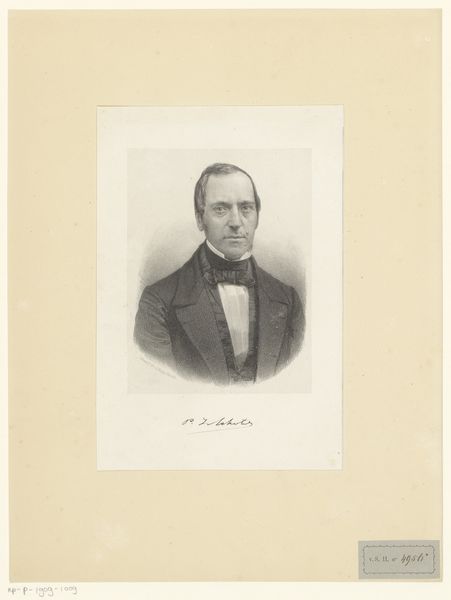
drawing, pencil
#
portrait
#
drawing
#
pencil drawing
#
pencil
#
academic-art
#
realism
Dimensions: height 484 mm, width 338 mm
Copyright: Rijks Museum: Open Domain
Editor: So this is a portrait of C.D. Canne, possibly from 1847, by Johann Peter Berghaus. It's a pencil drawing, quite formal. The lines are so controlled, almost rigid. What stands out to you? Curator: I am immediately drawn to the tonal range Berghaus achieves with simple pencil strokes. Note the contrast between the crisp delineation of the figure and the soft hatching that creates the subtle gradations of light and shadow. It models form so realistically, and speaks to Canne’s social position, without embellishment. Consider how this visual contrast creates a captivating, realistic likeness. Editor: That's true, the light does define the subject. So, by focusing on form and technique, are you suggesting we can understand the artist's intent without looking for external meanings? Curator: Precisely. Look at the way the artist uses line and value to define the planes of the face. Notice how the textures of fabric in the waistcoat and jacket, with the contrast of the bow-tie fabric are distinct and precisely rendered through the pencil work alone. Isn't that remarkable enough? The focus remains on the artist's skillful manipulation of form and the visual interplay between elements. Editor: I see what you mean. It’s almost like Berghaus is demonstrating the sheer potential of the medium itself, how much realism is achievable through close observation and controlled marks. Curator: Indeed. By appreciating the artistic decisions regarding line, value, and composition, one can see beyond the mere subject matter, recognizing the drawing as a self-contained aesthetic statement. The subtle details draw one's attention and invite contemplation, fostering an appreciation for its own intrinsic value. Editor: Okay, that gives me a whole new way of seeing portraits! I will pay much closer attention to the marks in each work, instead of relying on external details alone. Thanks!
Comments
No comments
Be the first to comment and join the conversation on the ultimate creative platform.
